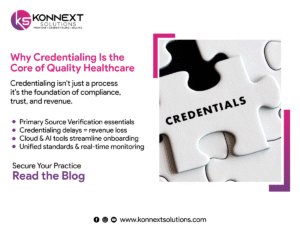Many healthcare providers find themselves at a crossroads: should they stay “in-network” with Medicare as a Participating Provider (PAR), or switch to a Non-Participating Provider (Non-PAR) status? The decision can significantly impact your practice’s reimbursements, patient relationships, and long-term financial stability.
In this essential guide, we break down everything you need to know to make an informed choice that protects your bottom line and positions your practice for growth.
What Is a Medicare Participating (PAR) Provider?
A Participating Provider signs a formal agreement with Medicare to:
- Accept Medicare patients
- Accept assignmenton all claims (i.e., accept the Medicare-approved amount as full payment)
- Submit claims directly to Medicare and receive payments promptly
Key Features of PAR Providers:
- Reimbursed based on Medicare’s fixed fee schedule
- Cannot balance billbeyond co-insurance and deductible
- Typically receive 5% higherreimbursement rates than Non-PAR providers
- Get listed in Medicare directories, enhancing visibility
Claim Flow Example:
Medicare pays 80% of the approved amount; the patient (or secondary insurance) pays the remaining 20%.
What Is a Medicare Non-Participating (Non-PAR) Provider?
A Non-PAR Provider does not agree to accept Medicare’s full terms but can still treat Medicare patients on a case-by-case basis.
Key Features of Non-PAR Providers:
- May choose whether or notto accept assignment for each claim
- Can charge up to 15% more than Medicare’s approved rate (called the limiting charge)
- Reimbursed 5% less than PAR rates if they do accept assignment
- Patients typically pay more out of pocket
- Not listed in Medicare directories
Claim Flow Example:
Medicare reimburses the patient, not the provider, for 80% of the approved Non-PAR amount. The provider bills the patient for the full fee (up to the limiting charge), and the patient pays the difference.
PAR vs. Non-PAR: Side-by-Side Comparison
| Feature | Participating Provider | Non-Participating Provider |
| Agreement with Medicare | Yes – Required | No – Case-by-case assignment |
| Reimbursement Rate | Full Medicare rate | 95% of Medicare rate |
| Patient Billing | Cannot exceed approved amount | Can bill up to limiting charge |
| Balance Billing | Not allowed | Allowed within limits |
| Directory Listing | Listed in MEDPARD | Not listed |
| Claim Payment | Medicare pays provider | Medicare pays patient |
| Medigap Coordination | Automatically coordinated | Not guaranteed |
| Administrative Burden | Lower | Higher |
Real-World Example: Cost Analysis
Let’s say you perform a psychiatric diagnostic evaluation (CPT 90792).
| Fee Type | PAR Provider | Non-PAR Provider |
| Medicare Fee Schedule | $168.00 | $159.60 (95% of PAR) |
| Limiting Charge | N/A | $183.54 |
| Medicare Pays (80%) | $134.40 | $127.68 |
| Patient Pays (20%) + Excess | $33.60 | $55.86 |
Insight:
While Non-PAR providers can bill more, patients bear the extra cost. This can lead to higher patient resistance or billing challenges, despite the slightly higher gross income potential.
When Should You Choose PAR?
Choose Participating status if your priorities are:
- Consistent and predictable revenue
- Streamlined billing and collections
- Access to a larger pool of Medicare patients
- Simpler administrative processes
- Automatic Medigap coordination
When Should You Consider Non-PAR?
Non-PAR may be a better fit if:
- You want more control over your fees
- You cater to private-pay or high-end clientswilling to pay more out of pocket
- You provide specialized or elective servicesoutside standard Medicare coverage
- You’re willing to manage additional paperwork and patient education
Final Thoughts: Making the Right Call for Your Practice
The decision to be a PAR or Non-PAR Medicare provider should align with your revenue goals, patient base, and operational capacity.
Take time to:
- Evaluate your patient demographics
- Review your current Medicare revenue
- Consider the administrative impact
- Analyze how much time and money is lost managing denials or balance billing
There’s no one-size-fits-all solution but with the right data and strategy, you can make a choice that maximizes both income and efficiency.
Need Expert Help Deciding?
Navigating Medicare participation isn’t just about forms and reimbursement rates—it’s about positioning your practice for long-term success.
At Konnext Solutions, we help healthcare providers analyze their options, project revenue impacts, and streamline Medicare billing operations whether you’re PAR, Non-PAR, or considering a switch.
📞 Let’s discuss your practice strategy today.




